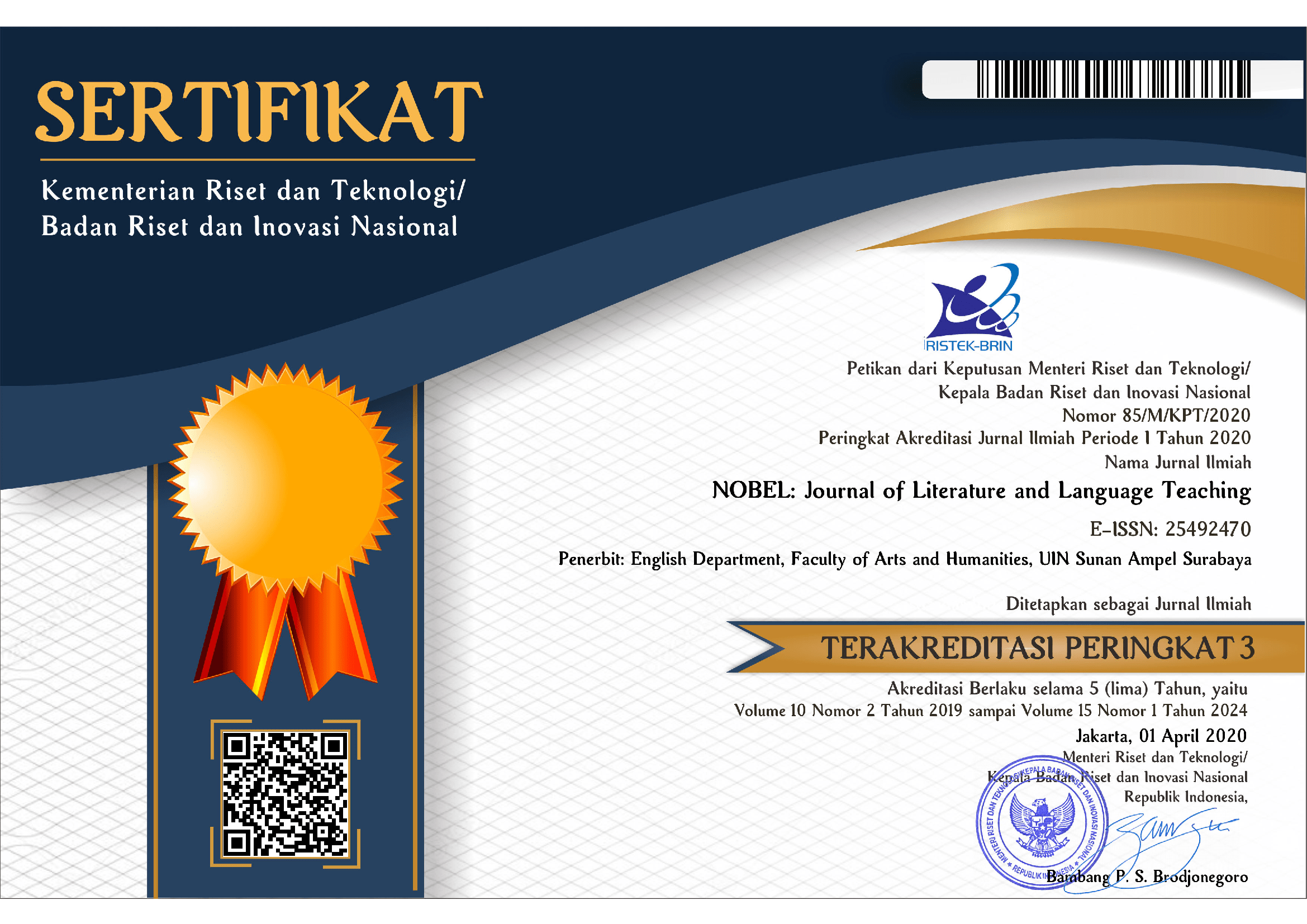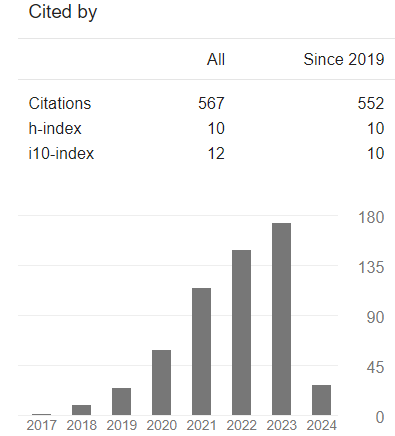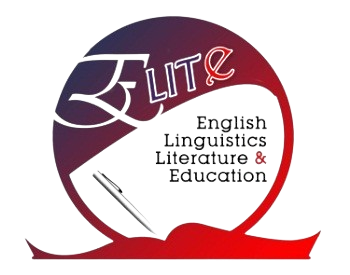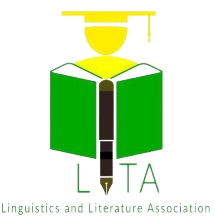Lecturers' Attitudes towards English Varieties Exposure in Indonesia
DOI:
https://doi.org/10.15642/NOBEL.2019.10.2.163-173Keywords:
English Varieties, Attitude, English as international language (EIL).Abstract
This study was established from the lack of research of English varieties concept in Indonesia. In this study, the lecturers' attitude toward the English varieties is explored as well as their view about using the English varieties in the classroom. The study used a qualitative research design to seek the participants' attitude toward the varieties. The subjects of the study are ten lecturers of three universities in Surabaya; they are two private and one state university with ten lecturers in total. The researcher used prompt-production to explore in-depth lecturers' attitude. One of the most significant findings to emerge from this study is the differences between the international graduated lecturers and national graduated lecturers in terms of their attitude toward the English varieties. Furthermore, this attitude also influences their perception about teaching the varieties in English language teaching (ELT) classroom.
Downloads
References
Alsagoff, L., Mckay, S. L., Hu, G., & Renandya, W. A. (2012). Principles and practices for teaching English as an international language (1st ed.) London: Routledge.
Anne, K. (2005). Accents of English as a lingua franca: A study of Finish textbooks. International Journal of Applied Linguistics, 21(April), 94.
Bauer, L. (2002). An introduction to international varieties of English. Edinburgh: Edinburgh University Press Ltd.
Crystal, D. (2003). English as a global language. (2nd ed.) Cambridge: Cambridge University Press.
Dewey, M. (2012). Towards a post-normative approach : learning the pedagogy of ELF. Journal of English as a Lingua Franca, 1, 141–170. https://doi.org/DOI 10.1515/jelf-2012-0007
Dewi, A. (2017). The English ( es ) to teach after study and life in Australia : a study of Indonesian English language educators. Asian Englishes, 8678(July), 1–20. https://doi.org/10.1080/13488678.2017.1279762
Farrell, T. S. C., & Martin, S. (2009). To teach standard English or world Englishes? English Teaching Forum.
Gandana, I., & Parr, G. (2013). Professional identity, curriculum and teaching intercultural communication: an Indonesian case study. Language, Culture and Curriculum, 26(3), 229 – 246. https://doi.org/10.1080/07908318.2013.833620
Görlach, M. (1998). Varieties of English world-wide: where we stand. Links & Letters, (September 1997), 13–36. Retrieved from http://ddd.uab.es/pub/linksandletters/11337397n5p13.pdf
Huang, L.-S. (2008). Using guided corpus-aided discovery to generate active learning. English Teaching Forum, 4, 20–27.
Hurtig, M. (2006). Varieties of English in the Swedish classroom. Karlstads universitet.
Jenkins, J. (2012). English as a lingua franca from the classroom to the classroom. ELT Journal, 66(4), 486–494. https://doi.org/10.1093/elt/ccs040
Kirkpatrick, A. (2006). Asian englishes: implications for english language teaching. Asian Englishes, 9(2), 4–19. https://doi.org/10.1080/13488678.2006.10801186
Nickerson, C. (2005). English as a lingua franca in international business contexts. English for Specific Purposes, 24(4 SPEC. ISS.), 367–380. https://doi.org/10.1016/j.esp.2005.02.001
Sung, C. C. M. (2016). Exposure to multiple accents of English in the English Language Teaching classroom: from second language learners’ perspectives. Innovation in Language Learning and Teaching, 10(3), 190–205. https://doi.org/10.1080/17501229.2014.936869
Ur, P. (2010). English as a lingua franca: A teacher’s perspective. Cadernos de Letras, 27, 85–92. Retrieved from http://www.letras.ufrj.br/anglo_germanicas/cadernos/numeros/122010/textos/cl301220100penny.pdf
Young, T. J., & Walsh, S. (2010). Which English? Whose English? An investigation of “non-native†teachers’ beliefs about target varieties. Language, Culture and Curriculum, 23(2), 123–137. https://doi.org/10.1080/07908311003797627
Zacharias, N. T. (2003). A survey of tertiary teachers beliefs about English Language Teaching in Indonesia with regard to the role of English as a global language. Assumption University of Thailand.
Zacharias, T. (2010). The teacher identity construction of 12 asian ES teachers in TESOL graduate programs *, 7(2), 177–197.







